Regional Gardening, Best Perennials, Mid-Atlantic Gardening
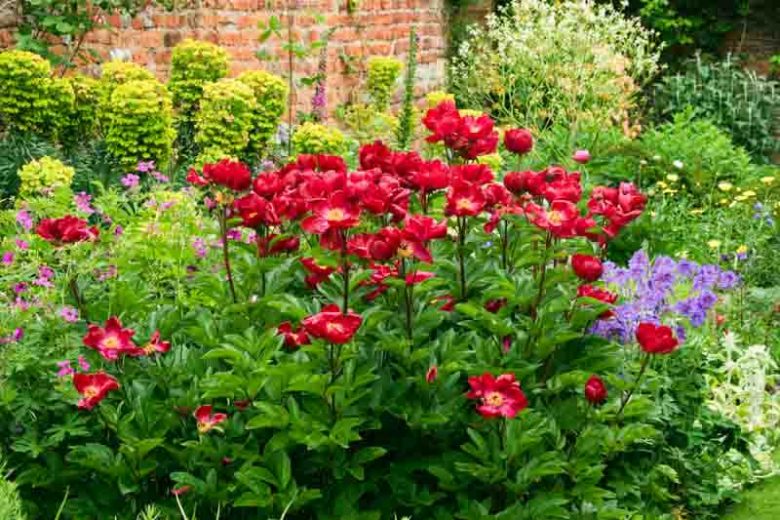
Perennial flowers are fabulous additions to our gardens. When carefully selected, wave after wave of colorful blooms will be enjoyed in your Mid-Atlantic garden from spring to fall. Reliable plants, they come back stronger and bigger when winter turns to spring, ready to start another spectacular show.
Selecting the right perennial plant might be challenging for Mid-Atlantic gardeners. If you are looking for beautiful, low-maintenance, and hardy perennial plants that will sail through the challenges of the seasons in the Mid-Atlantic region, you may want to consider these top performing perennial varieties. As you will note, some have also received the prestigious Award of Garden Merit of the Royal Horticultural Society!
| Hardiness |
5 - 7 |
|---|---|
| Heat Zones |
3 - 6 |
| Plant Type | Perennials |
| Exposure | Full Sun, Partial Sun, Shade |
| Season of Interest |
Spring (Late) Summer (Early, Mid, Late) Fall |
| Height | |
| Spread | |
| Maintenance | Low, Average |
| Soil Type | Chalk, Clay, Loam, Sand |
| Soil pH | Acid, Alkaline, Neutral |
| Soil Drainage | Moist but Well-Drained, Well-Drained |
| Characteristics | Plant of Merit, Showy |
| Landscaping Ideas | Patio And Containers, Beds And Borders |
Cultivated since the 19th century, award-winner Alchemilla mollis (Lady’s Mantle) provides a lovely finish to a border or a path edge and blends beautifully with most perennials. This clump-forming perennial forms dense, leafy mounds of scallop-edged, toothed, densely hairy, light green leaves which nicely retain moisture beads after the rain.
| Hardiness | 3 - 8 |
|---|---|
| Exposure | Full Sun, Partial Sun |
| Season of Interest |
Spring (Late) Summer (Early) |
| Height |
1' - 2' (30cm - 60cm) |
| Spread |
1' - 2' (30cm - 60cm) |
Native to North America, Amorpha canescens, or Lead Plant, is a hardy deciduous shrub boasting aromatic, silver-gray feathery leaves and blue-purple flower spikes with golden anthers. Flowering in late spring to early summer, it draws bees, butterflies, and other insects. Though it often retreats to the ground in winter, it vigorously regrows in spring. This tough shrub tolerates heat, drought, and wind, making it ideal for borders, meadows, and windbreaks, and serves as an erosion control agent.
| Hardiness | 2 - 9 |
|---|---|
| Exposure | Full Sun |
| Season of Interest |
Spring (Late) Summer (Early) |
| Height |
2' - 3' (60cm - 90cm) |
| Spread |
2' - 3' (60cm - 90cm) |
Chosen as one of the 75 Great Plants for American Gardens by the American Horticultural Society, Amsonia tabernaemontana (Blue Star) is an exceptional perennial. It features delicate, pale blue, star-shaped flowers in late spring to early summer, attracting insects and hummingbirds. With attractive foliage and golden fall color, it is a low-maintenance, disease-resistant garden plant.
| Hardiness | 3 - 9 |
|---|---|
| Exposure | Full Sun, Partial Sun |
| Season of Interest |
Spring (Late) Summer (Early) Fall |
| Height |
2' - 3' (60cm - 90cm) |
| Spread |
2' - 3' (60cm - 90cm) |
Highly robust and vigorous, Anemone x hybrida ‘Robustissima’ is a sensational Japanese Anemone with single, soft pink cup-shaped blossoms borne on reddish stems. Dancing and swaying in the breeze, the eye-catching 5-petalled blossoms are gracefully carried on wiry reddish stems above mounds of divided, grape-like, dark green foliage.
| Hardiness | 4 - 8 |
|---|---|
| Exposure | Full Sun, Partial Sun |
| Season of Interest |
Summer (Late) Fall |
| Height |
3' - 4' (90cm - 120cm) |
| Spread |
2' - 3' (60cm - 90cm) |
A drought-tolerant, deer-resistant perennial, Asclepias tuberosa (Butterfly Weed) is valued for its vivid orange to yellow-orange blooms that adorn the summer garden. Its stiff, lance-shaped leaves support radiant umbels, 2-5 inches wide, succeeded by captivating fall seed pods. Contrasting its bright blossoms, the lush green foliage stands out. Unlike many milkweeds, this North American native wildflower lacks milky sap.
| Hardiness | 3 - 9 |
|---|---|
| Exposure | Full Sun |
| Season of Interest |
Summer (Early, Mid, Late) |
| Height |
1' - 2' (30cm - 60cm) |
| Spread |
1' - 2' (30cm - 60cm) |
Baptisia australis (False Indigo) is a hardy perennial that offers long-lasting beauty. In spring, it showcases spikes of indigo blue flowers reminiscent of Lupines, attracting pollinators. Its blue-green, trifoliate leaves provide an attractive backdrop throughout the season. The plant forms intriguing seedpods that turn black in fall and persist into winter if left untrimmed.
| Hardiness | 3 - 9 |
|---|---|
| Exposure | Full Sun |
| Season of Interest |
Spring (Late) Summer (Early) |
| Height |
3' - 4' (90cm - 120cm) |
| Spread |
3' - 4' (90cm - 120cm) |
Renowned for its grace and charm, Dicentra spectabilis (Bleeding Heart) is a delicate herbaceous perennial with arching stems adorned with pendulous pink flowers, resembling hearts with white petals. The blooms gracefully hover above the attractive, soft green, divided foliage. It typically blooms for 4-6 weeks in late spring to early summer. Ideal for shaded borders and woodland gardens.
| Hardiness | 3 - 9 |
|---|---|
| Exposure | Partial Sun |
| Season of Interest |
Spring (Late) Summer (Early) |
| Height |
2' - 3' (60cm - 90cm) |
| Spread |
1' - 3' (30cm - 90cm) |
AEupatorium maculatum, also known as spotted Joe-Pye weed, is a striking perennial wildflower native to North America. It features tall, sturdy stems, whorled leaves, and large, fluffy, mauve-pink flower clusters that bloom in mid to late summer. A favorite of butterflies, bees, and other pollinators, it thrives in moist environments and is commonly used in naturalistic and native plant gardens, contributing both height and color.
| Hardiness | 3 - 9 |
|---|---|
| Exposure | Full Sun, Partial Sun |
| Season of Interest |
Summer (Mid, Late) Fall Winter |
| Height |
5' - 8' (150cm - 240cm) |
| Spread |
4' - 5' (120cm - 150cm) |
Iberis sempervirens (Evergreen Candytuft) is a delightful, low-growing perennial that adds charm to your garden in spring. Its pure white flowers, adorned with delicate yellow dots, stand out against the dark green foliage. This fabulous plant shouldn’t be overlooked, as it brings a touch of elegance to any landscape.
| Hardiness | 3 - 9 |
|---|---|
| Exposure | Full Sun |
| Season of Interest |
Spring (Mid, Late) |
| Height |
6" - 1' (15cm - 30cm) |
| Spread |
1' - 2' (30cm - 60cm) |
Appreciated for its striking vertical flower spikes and fine-textured foliage, Gayfeather or Blazing Star (Liatris spicata) is a valuable perennial. Its button-shaped, purple, rosy red, or white flowers resemble blazing stars and bloom sequentially over several weeks, attracting bees, butterflies, and hummingbirds. With attractive foliage that stays lush all summer and turns bronze in fall, this easy-to-grow plant adds a strong vertical accent to sunny borders
| Hardiness | 3 - 9 |
|---|---|
| Exposure | Full Sun |
| Season of Interest |
Summer (Mid, Late) Fall |
| Height |
2' - 4' (60cm - 120cm) |
| Spread |
9" - 2' (23cm - 60cm) |
Renowned for its abundant blooms and impressive height, Nepeta ‘Six Hills Giant’ (Catmint) is a robust perennial with aromatic, gray-green foliage. It produces tall spikes of rich violet-blue flowers, up to 12 inches (30 cm) long, throughout the growing season. Plant it in large drifts for a colorful and fragrant garden display.
| Hardiness | 3 - 8 |
|---|---|
| Exposure | Full Sun, Partial Sun |
| Season of Interest |
Summer (Early, Mid, Late) |
| Height |
2' - 3' (60cm - 90cm) |
| Spread |
1' - 2' (30cm - 60cm) |
Russian Sage (Perovskia atriplicifolia) is a hardy and drought-resistant perennial with slender white stems adorned with small, lavender-blue flowers. Its finely-dissected gray-green leaves add to its delicate appearance. Blooming from mid-summer to fall, it thrives in challenging conditions such as heat and poor soils. With its long-lasting blooms and striking winter stems, it is a valuable addition to any garden, especially for xeriscaping.
| Hardiness | 4 - 9 |
|---|---|
| Exposure | Full Sun |
| Season of Interest |
Summer (Mid, Late) Fall |
| Height |
3' - 4' (90cm - 120cm) |
| Spread |
3' - 4' (90cm - 120cm) |
Phlox divaricata (Woodland Phlox) is a spreading wildflower with semi-evergreen foliage. It produces abundant clusters of fragrant, saucer-shaped flowers in mid to late spring, ranging in shades of lilac, rose, or blue. With its low, creeping growth habit, it forms a beautiful carpet of blooms, making it a charming addition to woodland gardens. Native to eastern North America.
| Hardiness | 3 - 8 |
|---|---|
| Exposure | Partial Sun |
| Season of Interest |
Spring (Mid, Late) |
| Height |
9" - 1' (23cm - 30cm) |
| Spread |
9" - 1' (23cm - 30cm) |
Polygonatum odoratum ‘Variegatum’ (Variegated Solomon’s Seal) is a stunning shade-loving perennial with arching stems. It boasts fragrant, vase-shaped, creamy-white flowers with green tips in late spring to early summer. The elegant bright green foliage is adorned with creamy white splashes and turns yellow in fall. This classic beauty is perfect for shady woodland gardens or part-shade to full-shade borders.
| Hardiness | 3 - 8 |
|---|---|
| Exposure | Partial Sun, Shade |
| Season of Interest |
Spring (Late) Summer (Early) |
| Height |
2' - 3' (60cm - 90cm) |
| Spread |
9" - 1' (23cm - 30cm) |
Adding a burst of color to the late-season garden, Solidago rugosa ‘Fireworks’ (Rough Goldenrod) creates a spectacular display with its bright yellow arching flower panicles. Blooming for weeks, it attracts a variety of beneficial insects. With fine-textured leaves and controlled spreading, it harmonizes well with other perennials.
| Hardiness | 4 - 8 |
|---|---|
| Exposure | Full Sun |
| Season of Interest |
Summer (Late) Fall |
| Height |
2' - 3' (60cm - 90cm) |
| Spread |
2' - 3' (60cm - 90cm) |
Hardy geraniums are a garden favorite, boasting abundant flowers and lush foliage that adds texture. They are incredibly resilient, resisting pests and diseases, making them low-maintenance. These plants are known for their easy growth, making them a popular choice for both beginner and experienced gardeners.
| Hardiness | 4 - 9 |
|---|---|
| Exposure | Full Sun, Partial Sun |
| Season of Interest |
Spring (Late) Summer (Early, Mid, Late) Fall |
| Height |
6" - 2' (15cm - 60cm) |
| Spread |
1' - 3' (30cm - 90cm) |
Achillea is valued for its pleasantly fragrant, feathery foliage and its long-lasting, conspicuous, flat umbel flowers. Vital ingredient of herbaceous borders or prairie plantings, Achillea blooms for weeks from late spring to late summer, in a wide range of colors sgrdegdfsghfg
| Hardiness | 3 - 9 |
|---|---|
| Exposure | Full Sun |
| Season of Interest |
Spring (Late) Summer (Early, Mid, Late) |
| Height |
1' - 3' (30cm - 90cm) |
| Spread |
1' - 2' (30cm - 60cm) |
Aquilegia, also known as Columbine or Granny’s Bonnet, is a superb perennial for any garden. Its delicate, bell-shaped flowers form beautiful clusters, complemented by lacy foliage that emerges early in the year. Blooming abundantly for 4-6 weeks from mid-spring to summer, Columbine bridges the gap between early spring bulbs and the peak of the garden season.
| Hardiness | 3 - 9 |
|---|---|
| Exposure | Full Sun, Partial Sun |
| Season of Interest |
Spring (Mid, Late) Summer (Early, Mid, Late) |
| Height |
1' - 3' (30cm - 90cm) |
| Spread |
6" - 2' (15cm - 60cm) |
With its lavender-blue starry flowers, the Italian Aster (Aster amellus) adds a bold splash of color to the late-season garden. It blooms early, avoids the need for staking, and is resistant to mildew, making it a reliable and low-maintenance choice for any garden.
| Hardiness | 5 - 8 |
|---|---|
| Exposure | Full Sun |
| Season of Interest |
Summer (Late) Fall |
| Height |
1' - 3' (30cm - 90cm) |
| Spread |
1' - 2' (30cm - 60cm) |
New England Aster (Aster novae-angliae) provides an outstanding late-season show with its violet or lavender daisy-like flowers. This tall and spectacular Aster is easy to grow, long-lived, and attracts butterflies with its nectar-rich blooms. It brings cheerful fall color and adds beauty to any garden.
| Hardiness | 3 - 8 |
|---|---|
| Exposure | Full Sun, Partial Sun |
| Season of Interest |
Summer (Late) Fall |
| Height |
1' - 6' (30cm - 180cm) |
| Spread |
1' - 3' (30cm - 90cm) |
Campanula glomerata, commonly known as Clustered Bellflower, is a clump-forming perennial with dense clusters of vibrant, bell-shaped flowers in shades of purple, blue, or white. Blooming in late spring to early summer, this charming plant features toothed, lance-shaped leaves and adds a touch of color and elegance to gardens, borders, and rockeries.
| Hardiness | 3 - 8 |
|---|---|
| Exposure | Full Sun, Partial Sun |
| Season of Interest |
Spring (Late) Summer (Early) |
| Height |
6" - 2' (15cm - 60cm) |
| Spread |
1' - 3' (30cm - 90cm) |
Echinops (Globe Thistle) is a trouble-free and low-maintenance plant that brings outstanding contrast, interest, and color to the summer garden. With bold, globe-shaped flowers in steel blue or pristine white, these blooms add enchantment and beauty. Blooming from mid-summer to early fall, Echinops is a valuable addition to any landscape.
| Hardiness | 3 - 9 |
|---|---|
| Exposure | Full Sun, Partial Sun |
| Season of Interest |
Summer (Mid, Late) Fall |
| Height |
2' - 4' (60cm - 120cm) |
| Spread |
1' - 3' (30cm - 90cm) |
Hardy perennial salvias create stunning combinations with other perennials and ornamental grasses, thanks to their vertical, densely packed flower spikes in shades of rich indigo-blue, violet, and purple. Their vibrant colors add a striking contrast to the garden landscape.
| Hardiness | 3 - 9 |
|---|---|
| Exposure | Full Sun |
| Season of Interest |
Spring (Late) Summer (Early, Mid, Late) Fall |
| Height |
1' - 3' (30cm - 90cm) |
| Spread |
1' - 3' (30cm - 90cm) |
Hemerocallis, commonly known as daylilies, are hardy and versatile perennial plants that produce stunning flowers in a wide range of colors and patterns. With their long blooming season, ease of care, and ability to adapt to various growing conditions, daylilies are a popular choice for gardens and landscapes.
| Hardiness | 3 - 9 |
|---|---|
| Exposure | Full Sun, Partial Sun |
| Season of Interest |
Spring (Late) Summer (Early, Mid, Late) Fall |
| Height |
1' - 4' (30cm - 120cm) |
| Spread |
1' - 2' (30cm - 60cm) |
Siberian Irises are exceptional herbaceous perennials that possess numerous desirable traits. They boast stunning appearances, a prolonged flowering season, and are effortless to cultivate. Their exquisite flowers come in a captivating range of blue, purple, red-violet, or yellow hues, including newer cultivars with brown and orange shades. Additionally, their upright, blade-shaped foliage maintains its fresh allure throughout the growing season, enhancing their overall appeal in the garden.
| Hardiness | 3 - 8 |
|---|---|
| Exposure | Full Sun, Partial Sun |
| Season of Interest |
Spring (Late) Summer (Early) |
| Height |
2' - 4' (60cm - 120cm) |
| Spread |
1' - 2' (30cm - 60cm) |
Renowned for its magnificent blooms and vibrant green foliage, Shasta Daisy (Leucanthemum x superbum) is a cherished perennial. Offering a diverse selection of cultivars, there is a Shasta Daisy suited for every garden. These low-maintenance plants enchant with weeks of colorful flowers, beginning in early to mid-summer, making them a delightful addition to any landscape.
| Hardiness | 4 - 9 |
|---|---|
| Exposure | Full Sun, Partial Sun |
| Season of Interest |
Summer (Early, Mid, Late) |
| Height |
2' - 4' (60cm - 120cm) |
| Spread |
1' - 3' (30cm - 90cm) |
Vibrant and distinctive, Monarda (Bee Balm) is a summer-blooming perennial that adds a splash of color to borders. Whether planted individually or in groups, its eye-catching flower heads create a captivating display, making it a standout plant in any garden.
| Hardiness | 3 - 9 |
|---|---|
| Exposure | Full Sun, Partial Sun |
| Season of Interest |
Summer (Mid, Late) Fall |
| Height |
1' - 4' (30cm - 120cm) |
| Spread |
1' - 3' (30cm - 90cm) |
Beloved for their abundant blooms, the beauty of their exquisite flowers, their delightful fragrance, and their bold foliage changing shades over the seasons, peony flowers add a dazzling splash of color in the landscape.
| Hardiness | 3 - 9 |
|---|---|
| Exposure | Full Sun, Partial Sun |
| Season of Interest |
Spring (Late) Summer (Early) |
| Height |
2' - 7' (60cm - 210cm) |
| Spread |
2' - 3' (60cm - 90cm) |
With their striking, silky-satin flowers in vibrant shades of red, orange, white, or pink, Oriental Poppies (Papaver orientale) are the stars of the late spring to early summer garden. These eye-catching perennials add a touch of drama and beauty to any landscape.
| Hardiness | 3 - 8 |
|---|---|
| Exposure | Full Sun |
| Season of Interest |
Spring (Late) Summer (Early) |
| Height |
2' - 4' (60cm - 120cm) |
| Spread |
1' - 2' (30cm - 60cm) |
Phlox paniculata, a garden classic, offers showy, fragrant flowers that bloom from summer to early fall. Its diverse colors, including white, lavender, pink, and red, create stunning round heads that sway in the breeze, spreading a delightful fragrance throughout the garden.
| Hardiness | 4 - 8 |
|---|---|
| Exposure | Full Sun, Partial Sun |
| Season of Interest |
Summer (Mid, Late) Fall |
| Height |
2' - 4' (60cm - 120cm) |
| Spread |
2' - 3' (60cm - 90cm) |
Prized for its vibrant warm hues, Rudbeckia fulgida is a stunning herbaceous perennial that adds a burst of golden yellow to the late summer garden. Adorned with prominent brown or black central cones, its profuse flowers covers the lance-shaped foliage, creating a captivating display atop sturdy stems.
| Hardiness | 3 - 9 |
|---|---|
| Exposure | Full Sun, Partial Sun |
| Season of Interest |
Summer (Mid, Late) Fall |
| Height |
2' - 4' (60cm - 120cm) |
| Spread |
1' - 2' (30cm - 60cm) |
Sedum, commonly known as stonecrop, is a diverse genus of succulent plants that includes a wide range of species and cultivars. These hardy and drought-tolerant plants feature fleshy leaves and vibrant flowers, making them popular choices for rock gardens, borders, and containers. They are low-maintenance and attract pollinators to the garden.
| Hardiness | 3 - 9 |
|---|---|
| Exposure | Full Sun |
| Season of Interest |
Summer (Mid, Late) Fall Winter |
| Height |
3" - 2' (8cm - 60cm) |
| Spread |
6" - 2' (15cm - 60cm) |
Crabapples are susceptible to four major diseases (apple scab, fire blight, cedar-apple rust, powder mildew), which can cause early defoliation, disfigurement and weakening of trees. Powdery mildew is a problem in the Middle Atlantic region. Here is a list of varieties and cultivars that consistently perform well in the Mid-Atlantic Region.
Plant one of these shrubs or small trees and enjoy a spectacular display from late summer through winter. They all possess brightly colored fruits and are an excellent way to brighten the drab winter garden, turning sorry spots into beautiful focal points.
Selecting the right perennial plant that will thrive in such inhospitable locations might be challenging for Mid-Atlantic gardeners. If you are looking for beautiful, low-maintenance and hardy perennial plants that will sail through the challenges of the seasons in the Mid-Atlantic region, you may want to consider these top performing perennial varieties.
Choosing a delightfully fragrant tree adds to your overall enjoyment in spring or summer when its scent hangs beautifully in the air.
Hardy and exquisite-looking trees are important elements in Mid-Atlantic gardens. They are the most permanent and dominant elements in the landscape. There is a tremendous amount of possibilities in terms of trees to pick for your yard
Hardy shrubs are important elements in Mid-Atlantic gardens. They add depth and character to any garden and not only provide lovely blooms, but also attractive berries, showy fall color, and food for the birds.
Wondering which English rose cultivars have proven reliably hardy and entirely worth growing in Mid-Atlantic gardens?
While the climate of this region provides enough natural moisture, sunlight and summer warmth to successfully grow a wide variety of plants, there are still a few challenges
Deservedly popular, Hydrangeas are easy-care, long-lived, deciduous shrubs with magnificent flowers which show off in gardens, containers or in vases around our living areas. Amazingly versatile, Hydrangeas bloom throughout summer and into fall, providing long-lasting color when many shrubs are already fading. The following is a list of Hydrangeas recognized as proven performers in the Mid-Atlantic Region.
Clive Nichols
| Hardiness |
5 - 7 |
|---|---|
| Heat Zones |
3 - 6 |
| Plant Type | Perennials |
| Exposure | Full Sun, Partial Sun, Shade |
| Season of Interest |
Spring (Late) Summer (Early, Mid, Late) Fall |
| Height | |
| Spread | |
| Maintenance | Low, Average |
| Soil Type | Chalk, Clay, Loam, Sand |
| Soil pH | Acid, Alkaline, Neutral |
| Soil Drainage | Moist but Well-Drained, Well-Drained |
| Characteristics | Plant of Merit, Showy |
| Landscaping Ideas | Patio And Containers, Beds And Borders |
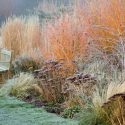
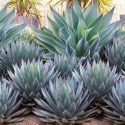
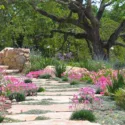
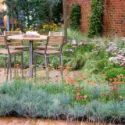
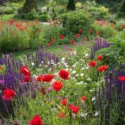
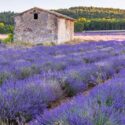
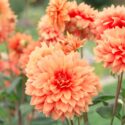
Create a membership account to save your garden designs and to view them on any device.
Becoming a contributing member of Gardenia is easy and can be done in just a few minutes. If you provide us with your name, email address and the payment of a modest $25 annual membership fee, you will become a full member, enabling you to design and save up to 25 of your garden design ideas.
Join now and start creating your dream garden!
Create a membership account to save your garden designs and to view them on any device.
Becoming a contributing member of Gardenia is easy and can be done in just a few minutes. If you provide us with your name, email address and the payment of a modest $25 annual membership fee, you will become a full member, enabling you to design and save up to 25 of your garden design ideas.
Join now and start creating your dream garden!